The South of Ecuador in 17 days
5 nights in Amazon
5 nights on the coast
The South of Ecuador in 17 days
Itinerary
On this trip you will be permanently accompanied by a professional English-speaking guide! The guide will meet you at the airport on day 1, where he or she will also say goodbye to you on the last day.
Breakfast and dinner will often be taken separately – in some places the guide will sleep in a different hotel from yours. But he accompanies all activities and transfers during the whole trip.
day 1 arrival in Guayaquil – hotel transfer
day 2 Manglares Churute and/or Las 7 Cascadas – transfer Machala
day 3 transfer to Macara via Puyango – visit Bosque Petrificado
Day 4 – visit Jorupe Reserve
day 5 transfer to Zaruma – city tour
day 6 Buenaventura Reserve / visit to gold mine
day 7 transfer to Vilcabamba – El Palto Waterfall
day 8 Cerro Mandango hike
day 9 Podocarpus National Park (entrance Cajanuma) – transfer to Loja
day 10 visit to Saraguro + transfer to Zamora
day 11 visit to Podocarpus NP (Bombuscaro entrance)
day 12 transfer to Gualaquiza – kayak
day 13 Amazonia Tour
day 14 Transfer to Cuenca – city tour
day 15 Free day in Cuenca
day 16 Transfer to Guayaquil with visit to Cajas
day 17 Transfer to the airport
- all excursions with private English-speaking guide
- all transfers with private car!
- For info and support you can always contact our EN-speaking colleague in Ecuador.
STANDARD
4 087 USD / person
on the basis of 2 persons
Hotels
Guayaquil: Nazu House – standard room
Machala: REEC Hotel – standard room
Macara: Urraca Lodge
Zaruma: El Jardin
Vilcabamba: Izhcayluma Lodge
Loja: La Casa de Manuel – standard room
Zamora: Copalinga Lodge
Gualaquiza: Rio Vida
Cuenca: Posada del Angel
PDF DOWNLOAD
COMFORT
4 231 USD / person
on the basis of 2 persons
Hotels
Guayaquil: Wyndham – standard room
Machala: REEC Hotel – standard room
Macara: Urraca Lodge
Zaruma: El Jardin
Vilcabamba: Izhcayluma Lodge
Loja: La Casa de Manuel – suite
Zamora: Copalinga Lodge
Gualaquiza: Rio Vida
Cuenca: Santa Lucia
PDF DOWNLOAD
LUXURY
4 619 USD / person
on the basis of 2 persons
Hotels
Guayaquil: Wyndham – suite
Machala: Oro Verde Hotel – standard room
Macara: Urraca Lodge
Zaruma: Portal del Cielo
Vilcabamba: Villa Beatriz
Loja: Grand Victoria – suite
Zamora: Copalinga Lodge
Gualaquiza: Rio Vida
Cuenca: Cruz del Vado
PDF DOWNLOAD
Includes
* All hotel accommodations with breakfast, transfers, domestic flights and excursions as stated in the program.
* Afternoon and evening meals as per the program if mentioned.
Excluding
* Drinks, gratuities and expenses of a personal nature.
* International flights to and from Ecuador.
* Travel – or cancellation insurance.
This is a sample trip. The order of the trip and the choice of hotels and excursions can be adapted to your wishes. You can combine this trip with another example trip or a cruise to the Galapagos Islands. The extensive range of hotels, excursions and cruises can be found elsewhere on this website.
DAY 1
Arrival in Guayaquil
Transfer from Guayaquil airport to hotel in private car
You will be met at the airport and taken to the hotel (drive of +/- 15 minutes).

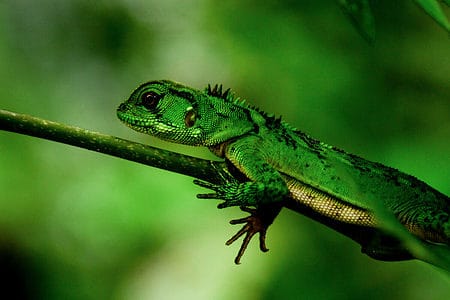
DAY 2
Transfer from Guayaquil to Machala in private car .
You will be picked up at the hotel and taken to Machala. This drive through the coastal area takes about 3 hours. You pass the Manglares Churute National Park and the area of Las 7 Cascadas.
The Manglares Churute Reserve
This mangrove reserve – 50 km southeast of Guayaquil, in the hills of the Churute Mountains – is a haven for many endangered bird species. You will also find the now rare coastal crocodile. The mangrove swamp covers 60% of the reserve and has 7 mangrove species; the red mangrove characterized by its large aerial roots, is the most common. Higher up in the area and in the adjacent hills you will find dry forests typical of this part of the coast, with trees such as the guayacán, the tagua, the bobo and rosewood.
There is a huge diversity of fish, mollusks and crustaceans: red crabs, conchas prietas, mussels and oysters. You can spot waterfowl such as herons, cormorants, ibises, and migratory birds such as curlews, plovers, etc. Notable are the bats, opossums, sloths and crab-eating raccoons. Larger and endangered animals are also found such as jaguars, ocelots, howler monkeys, peccaries, crocodiles, and alligators.
The 7 waterfalls
These waterfalls are located in the Cerro de Hayas Reserve, which has 600 hectares of natural forest. To visit this attraction, drive to Naranjal, an hour and a half south of Guayaquil. At kilometer 4 on the Naranjal-Machala road, walk for about 30 minutes until you reach the first waterfall. Then you wade through small streams coming from the Minas River. Along the way you will see blue butterflies, giant ants and a diversity of birds.
DAY 3
Transfer from Machala to Macara via Puyango in private car.
You will be picked up at the hotel and taken to Macara. This drive through the coastal area takes about 3.5 hours. You pass through Puyango where the entrance to the Bosque Petrificado National Park is.
The Petrified Forest of Puyango
In this National Park of 2658 ha size, lies the fossil deposit of a petrified forest. It is located in the middle basin of the Puyango River, between the provinces of El Oro and Loja. The sediments are divided into four geological formations (Zapotillo, Ciano, Anbin and Progreso) dating from the end of the Cretaceous and are rich not only in logs and petrified leaves – which belonged to the typical flora of the Mesozoic – but also in fossils of invertebrates. The area lies between 360 and 500 meters above sea level. The main attraction of the Petrified Forest of Puyango are the petrified trees of the genus Araucaria, found in the canyons of Sábalos and Chirimoyos. The trees are about 100 million years old and represent perhaps the oldest petrified wood collection in the world; the largest specimen is 2 m in diameter and 15 m long. There is also a small museum and an information center.
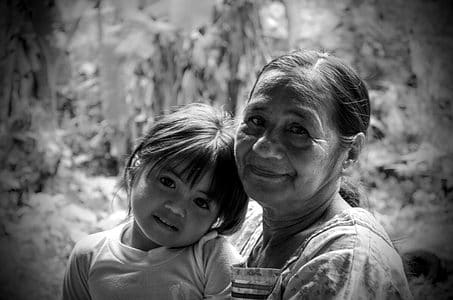

DAY 4
The Jorupe Reserve.
From here, the dry Tumbesian forests extend almost to Lima, Peru. The vegetation here is very diverse, with a large number of special habitats. These include arid scrub, deserts, deciduous tropical forest and pre-montane deciduous forest, the distribution of which depends on altitude, humidity and rainfall. Here you will find extensive forest remnants still in good condition. For this reason, Jorupe is home to a large number of endangered species. Nearly 190 bird species have been recorded in Jorupe, including almost all endemic species of the Tumbesian dry forests found in Ecuador. These endemic species include 15 globally threatened species. Jorupe is also an excellent place to observe the King Vulture.
DAY 5
Transfer from Macara to Piñas / Zaruma in private car (SP language driver).
You will be picked up at the hotel and taken to Zaruma (or Piñas). This drive through the coastal area takes about 3.5 hours.
The colonial city of Zaruma
Zaruma is one of the oldest towns in Ecuador, founded by the Spanish in 1595. The town was always very important because of its rich gold deposits. Today it is an important tourist center, but the mining industry is still doing very well. The colonial architecture, the narrow and steep streets together with the wonderful climate make Zaruma a fascinating place. You can stroll through the colonial district here or visit one of the many gold mines still in production. 30 minutes from Zaruma we find the Buenaventura Reserve where more than 400 bird species live. In this reserve you can visit the beautiful colibrey garden.
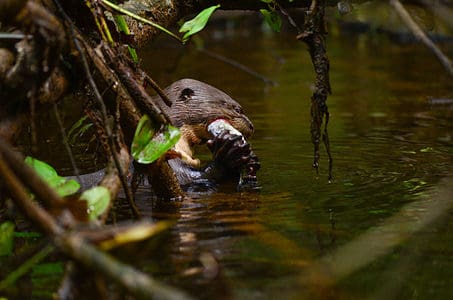
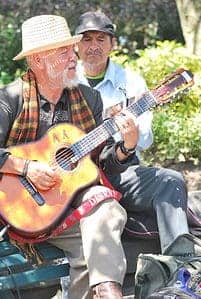
DAY 6
The Buenaventura Reserve.
The reserve has a record of more than 330 bird species, 15 of which are globally threatened and 34 locally endemic. The lower part of the reserve is sunnier and drier. Here live gray-cheeked parakeets, the great flycatcher, the Langlel paraglider and rice-backed buzzards. Higher up, you’ll find the El Oro parakeet and the Tapaculo. This small bird has not been found in any other location in the world. In 2010 they reintroduced the White Capuchin Monkey and three troops of the Black Howler Monkey live there. In the lower parts of the reserve, scientists have observed brightly colored poisonous frogs, as well as a new species of lizard and several Morpho butterflies. Buenaventura’s flora includes several endemic and endangered species. The trees of the Cloud Forest provide an ideal habitat for epiphytes, orchids, heliconias and giant trees.
The gold of Zaruma and Portovelo
Zaruma, with its winding streets and beautiful wooden houses, is one of the most beautifully preserved towns in Ecuador. A large part of the population lives from the gold that is mined in the region, mostly in the artesanal way. Because large parts of the town were undermined by gold diggers, there are regular subsidence events that swallow up entire houses. You can visit a small artesanal gold mine in Zaruma or a large-scale industrial gold mine in nearby Portovelo.
DAY 7
Transfer from Piñas / Zaruma to Vilcabamba in private car .
You will be picked up at the hotel and taken to Vilcabamba. This drive through the coastal area takes about 3 hours.
El Palto waterfall
It takes a few hours of walking to visit this 30-meter-high waterfall from Vilcabamba. It is best to drive by car up to the entrance of the National Park and from there a path leads steeply upwards. But the experience of swimming under the waterfall makes the effort worthwhile. You can also do this trip on horseback. The views over the valley on the way are impressive.


DAY 8
The Mandango Walk
The Mandango Trail, recommended for experienced hikers with sturdy shoes, takes about four hours. The breathtaking trail winds around two mountain peaks with spectacular views of the surrounding valleys. You should not be afraid of heights for this beautiful hike.It is a 6.8-kilometer loop trail that is sometimes very windy.
DAY 9
National Park Podocarpus (Cajanuma entrance).
Located in the provinces of Zamora Chinchipe and Loja, with an area of 144,993 hectares between 1,500-3,000 meters above sea level, the temperature here varies greatly depending on the altitude. We find here different types of forests: piedmont evergreen forest, lower montane evergreen forest, montane cloud forest, evergreen high mountain forest and paramo. The mountain forests of Cajanuma are home to 70 species of trees and in their paramos 135 vascular plants. In addition, it is considered a concentration area of endemic species, with 40 species of flora exclusive to this area. Another important group of these forests are the orchids, you will find 63 species here. There are 606 species of vertebrates. The most representative group in terms of abundance are birds with 560 species, followed by mammals with 46. It is a beautiful unspoiled area with impressive mountain panoramas. With the guide, you can spend hours trekking along the hiking trails here.
Transfer from Vilcabamba to Loja in private car (SP language driver).
You will be picked up at the hotel and taken to Loja. This drive through the Andes Mountains takes about 40 minutes.


DAY 10
Saraguro visit to indigenous village
Along the Panamericana, about two hours drive north from Loja lies this Quichua Indian town with 7500 inhabitants. The town is especially interesting for its Indian artesanate (especially silverware). On Sunday we visit the very nice market of Saraguro and then we head into the mountains towards the Gera community. Here we get an explanation of the daily life of the farmers and residents. We cook together with a family and make a local dish with products from the area that we may have harvested ourselves. After this delicious meal we return to Loja.
Difficulty: Light.
Bring with you: protection from the sun and rain, camera, water and comfortable shoes.
Duration: +/- 9 hours
Includes: English speaking guide, transportation and lunch
Excluding: community contribution (10 USD)
Transfer from Loja to Zamora in private car .
Je will be picked up at the hotel and taken to Zamora. This beautiful drive through the Andes Mountains takes about 1 hour.
DAY 11
National Park Podocarpus (Bombuscaro entrance).
Zamora is known as the city of waterfalls and orchids. It was founded by Hernando de Barahona on October 6, 1549, and since the 17th century its geographical location has made it one of the most important settlements in the southern Amazon. However, it was not until the 20th century that the city experienced accelerated demographic growth. Today, Zamora is an important administrative, economic and financial center. Two rivers flow through Zamora, the Zamora and the Bombuscaro. At 6 km from the city there is an entrance to the Podocarpus National Park, called Bombuscaro, a beautiful place where you can enjoy the dense cloud forest. You can take beautiful walks here or visit one of the many waterfalls. The most famous is La Poderosa.
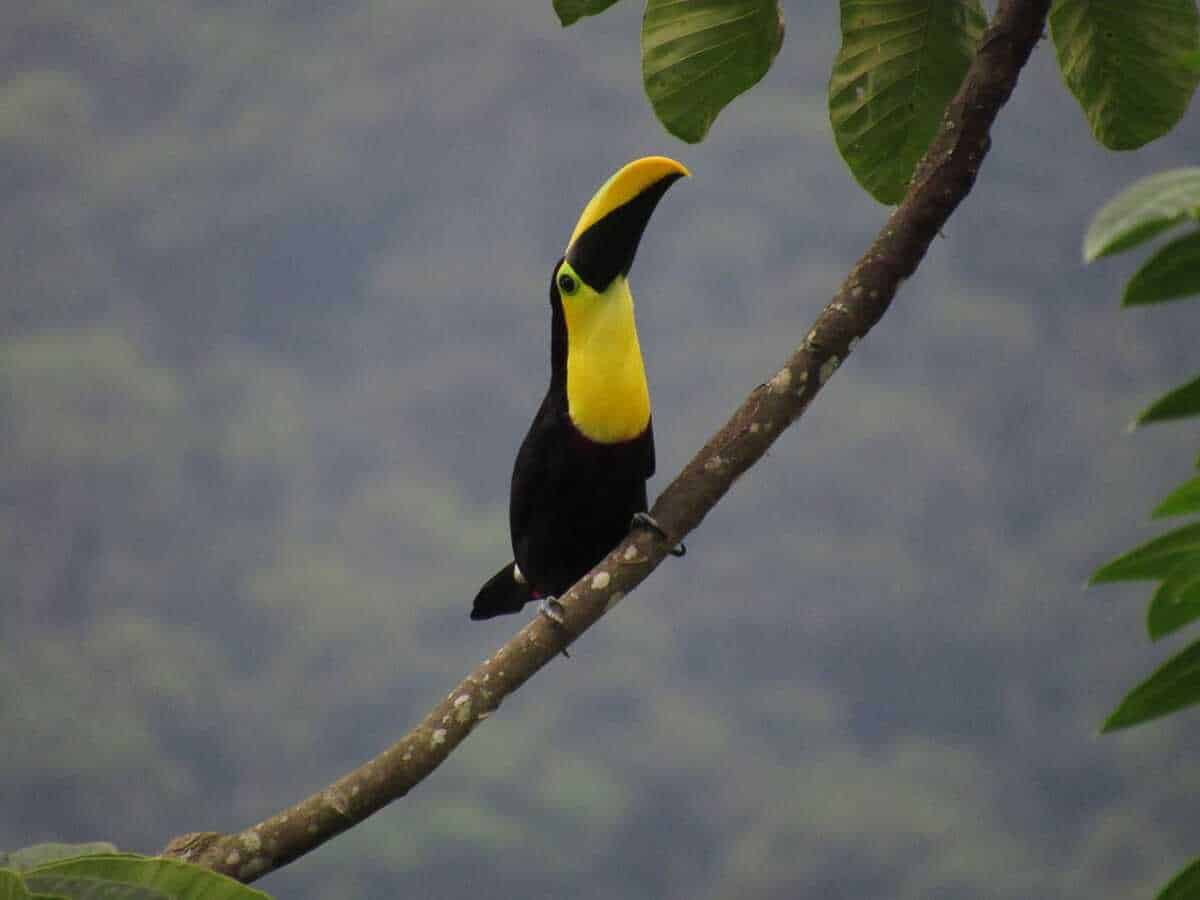

DAY 12
Transfer from Zamora to Gualaquiza in private car .
You will be picked up at the hotel and taken to Gualaquiza. This drive through the coastal area takes about an hour and a half.
Full Day Rafting-Kayamás
After a brief explanation of safety, we begin the descent from Nueva Tarqui to the Kayamás Bridge. We cross the area (with waterfall) of the Shuar Indians.
Includes: safety equipment, snack, transportation, certified guides, and opportunity for photography and GoPro video.
DAY 13
Day trip in the Amazon rainforest
Today, with a local guide, we will visit, by choice, the Bosque Medicinal, the Runahurco Reserve or the El Quimi National Park. Depending on your interests, the guide will focus on the community life of the Shuar Indians living in the forest or on the flora and fauna of the area.
Included: local Spanish speaking guide, transportation and lunch
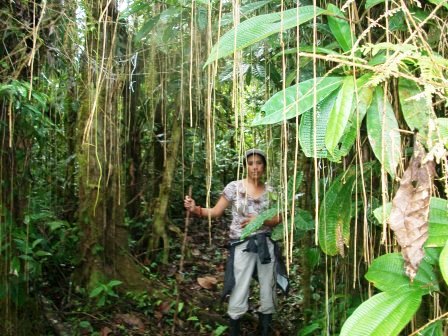

DAY 14
Transfer from Gualaquiza to Cuenca in private car .
You will be picked up at the hotel and taken to Cuenca. This drive through the Andes Mountains takes about 3 hours.
City tour Cuenca (half day) – private excursion
With an English speaking guide we visit the most beautiful places in the city. We stroll through the San Sebastian district and visit the most beautiful squares, streets and small churches. We make a stop at the Museum of Modern Art and then continue to a workshop where the famous Panama hats are made. We visit the panoramic point of Turi where we have a beautiful view over the city and then return to the hotel. The guide will gladly adapt the visit to your interests and preferences.
Duration: +/- 4 hours
Includes: English speaking guide and transportation
Excluding: entrance museums.
DAY 15
Cuenca – Visiting the colonial city on your own
Cuenca looks like Spain in the 17th century. The cobblestone streets, the flowery plazas, the old houses with balconies, wooden shutters and lattice work…. Everything exudes the atmosphere of colonial times. But Cuenca is also a culturally sophisticated city with some fine museums. In the green surroundings you have the ruins of Inga Pirca, the Cajas National Park, the villages of Chordeleg, Gualaceo, Sigsig and Baños, …


DAY 16
Transfer from Cuenca to Guayaquil in private car with visit to Cajas National Park.
During this beautiful day trip you will first make a visit of about two hours to the Cajas National Park. Then you gradually descend from the Andes Mountains to the coastal plain. In the evening you will arrive in Guayaquil.
Duration: +/- 6 hours (4 hours driving and 2 hours visit to the National Park)
Not included: lunch on the way
DAY 17
Transfer from the hotel to Guayaquil airport in private car.
You will be transferred from the hotel to the airport (drive of +/- 15 minutes).
Return flight from Guayaquil.

Comments
– On this trip you will be permanently accompanied by a professional English-speaking guide. The guide welcomes you on day 1 at the airport where he
he will also say goodbye to you on the last day. The guide often has breakfast and dinner separately – in several places the guide sleeps in a different hotel than you. But he accompanies all activities and transfers during the whole trip.
– All transfers with private car!
– For info and support you can always contact our NL-speaking staff in Ecuador.